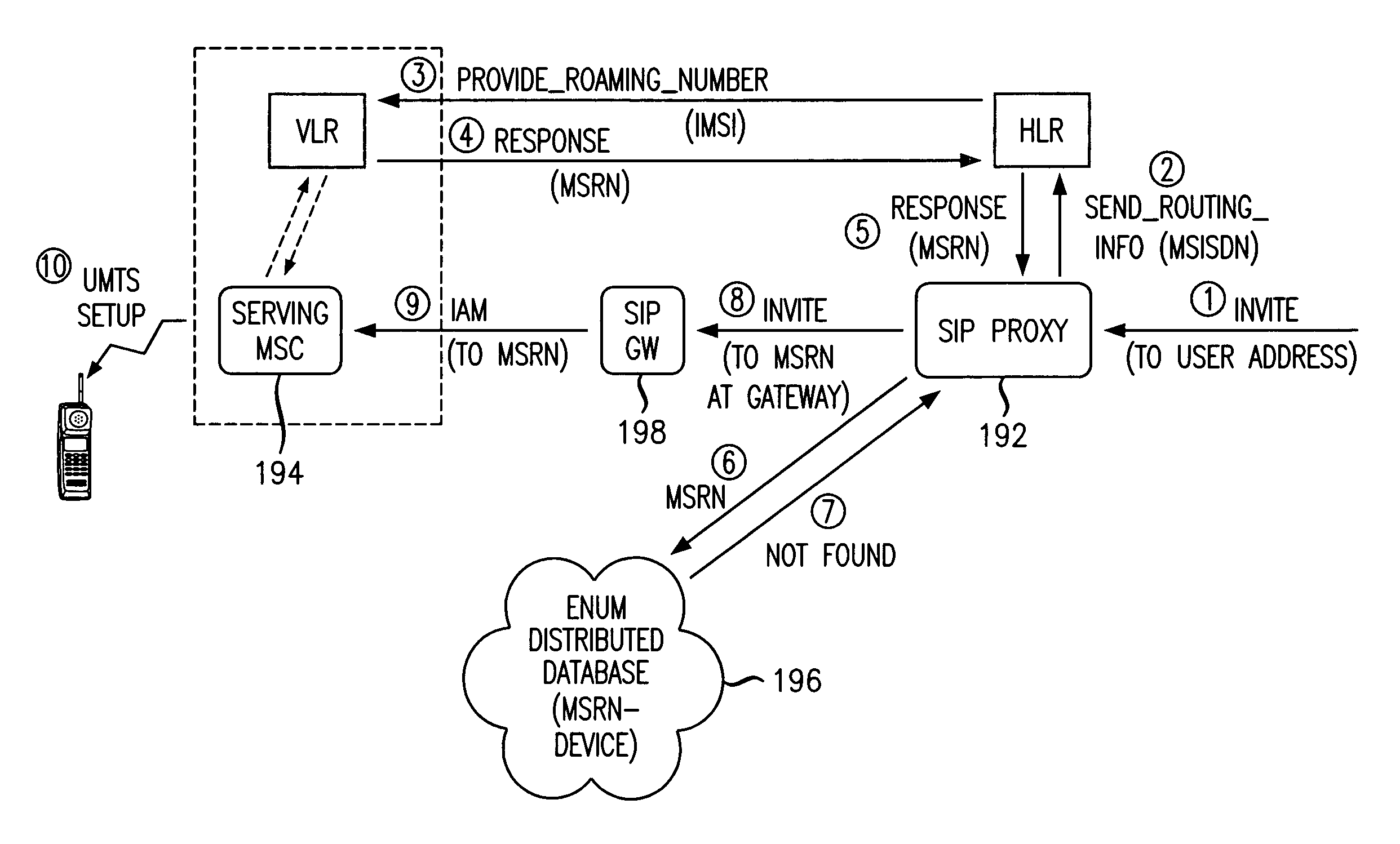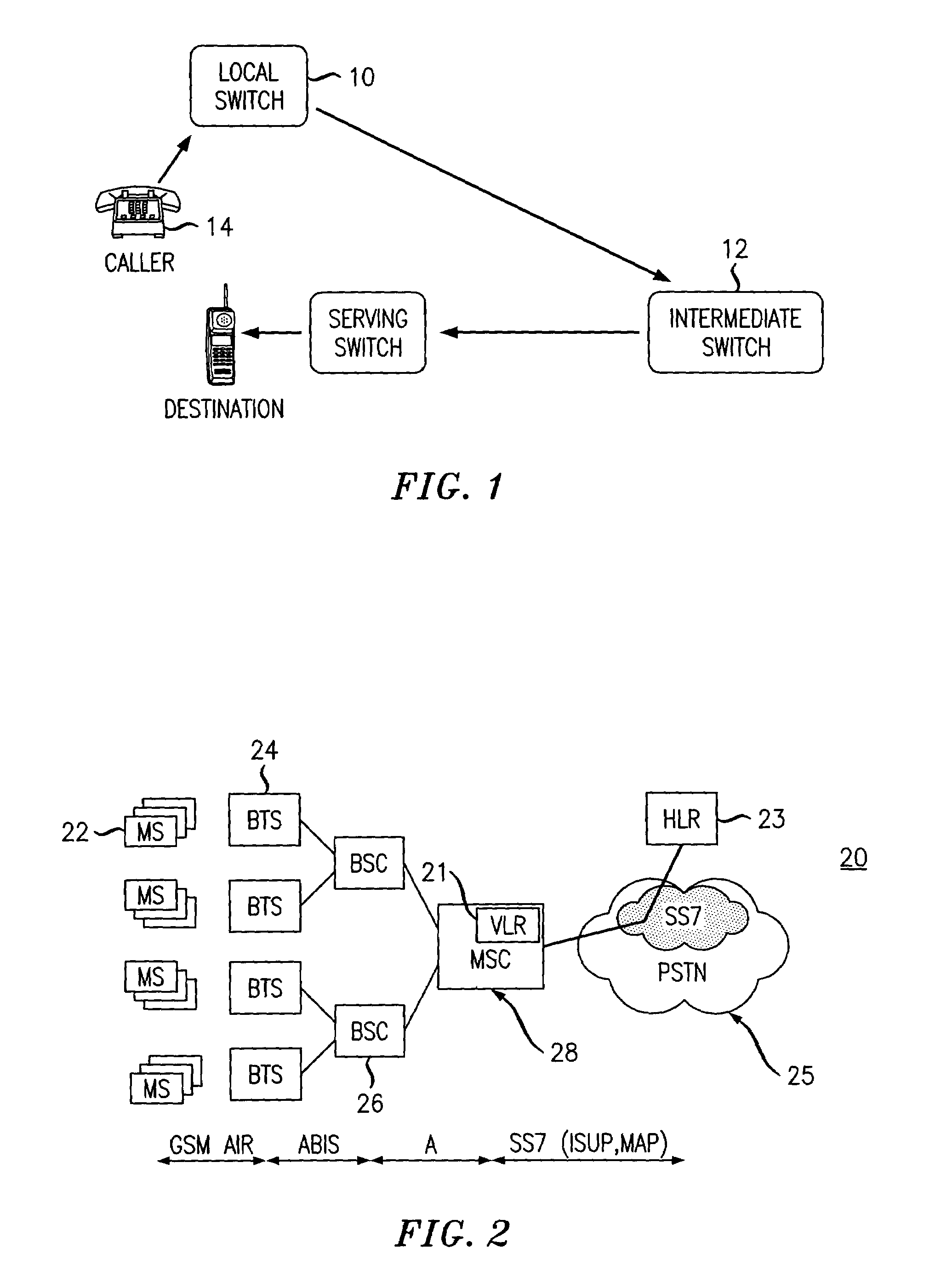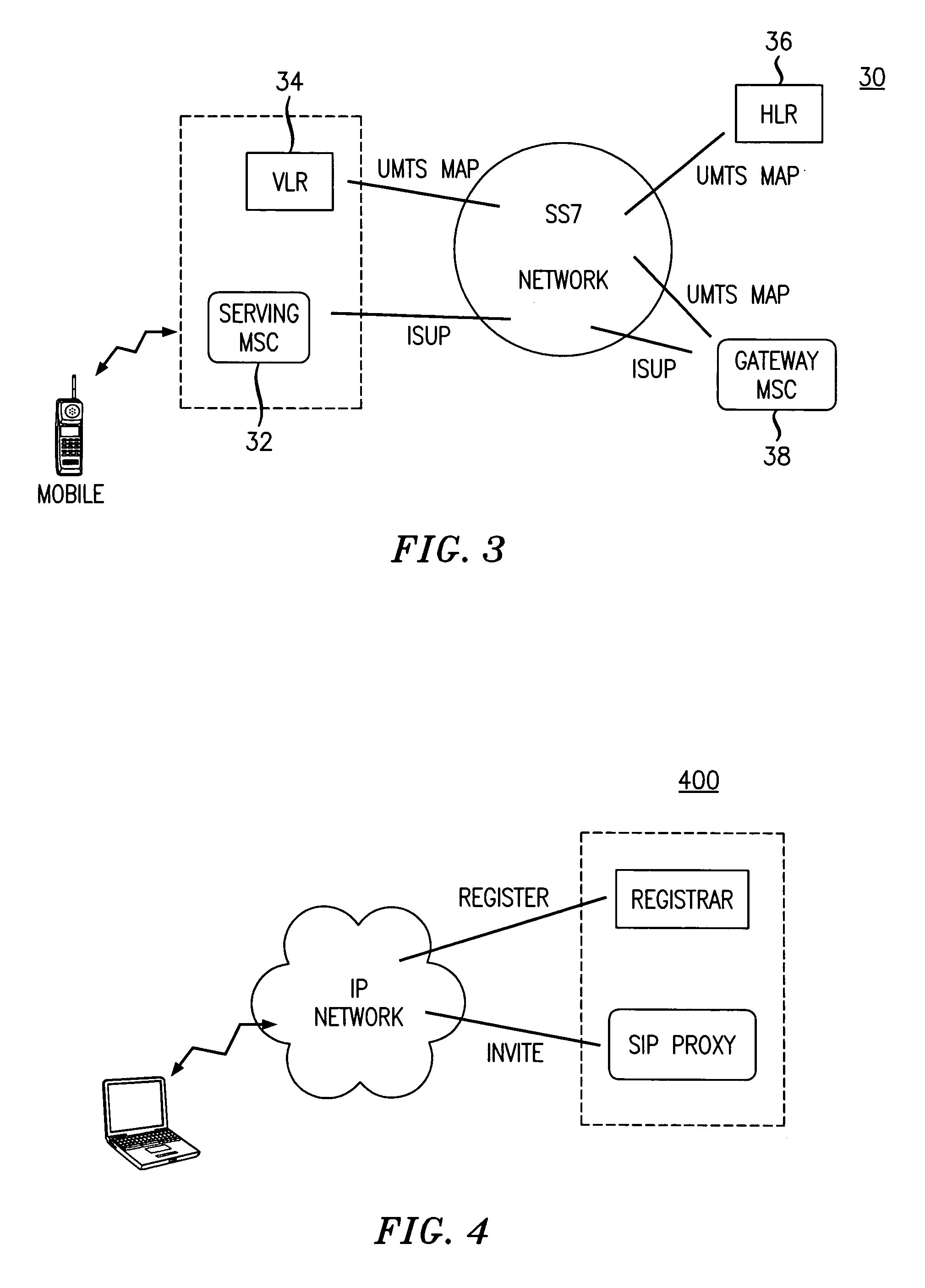Internet protocol based wireless call processing
a wireless call processing and internet protocol technology, applied in the field of cellular wireless communications, can solve the problems of inefficient and suboptimal voice circuit establishment, inefficient and suboptimal internet telephony and wireless telecommunications network, and neither of these approaches solve the general interworking problem
- Summary
- Abstract
- Description
- Claims
- Application Information
AI Technical Summary
Benefits of technology
Problems solved by technology
Method used
Image
Examples
Embodiment Construction
1 Overview
[0063]One embodiment of the invention relates to the issue of how to interwork Internet telephony and mobile telecommunications, such that all the issues discussed above are resolved. For concreteness, we will illustrate our architecture using SIP for Internet telephony and UMTS Release 1999 for mobile telephony. UMTS Release 1999 is an evolution of the older GSM system. Newer UMTS releases are directly IP-based.
[0064]Section 2 gives an architectural background on the mobility and call delivery mechanisms of UMTS and SIP, to provide a basis for the following discussions. Section 3 describes three different approaches to interworking UMTS and SIP, under the assumption that UMTS visited networks are IP-enabled. Section 4 provides mathematical and numerical analyses of the three approaches. In Section 5, we describe and analyze how the efficiently the three approaches can interwork with existing non-IP-enabled infrastructure, and some concluding remarks are provided in Sectio...
PUM
 Login to View More
Login to View More Abstract
Description
Claims
Application Information
 Login to View More
Login to View More - R&D
- Intellectual Property
- Life Sciences
- Materials
- Tech Scout
- Unparalleled Data Quality
- Higher Quality Content
- 60% Fewer Hallucinations
Browse by: Latest US Patents, China's latest patents, Technical Efficacy Thesaurus, Application Domain, Technology Topic, Popular Technical Reports.
© 2025 PatSnap. All rights reserved.Legal|Privacy policy|Modern Slavery Act Transparency Statement|Sitemap|About US| Contact US: help@patsnap.com



